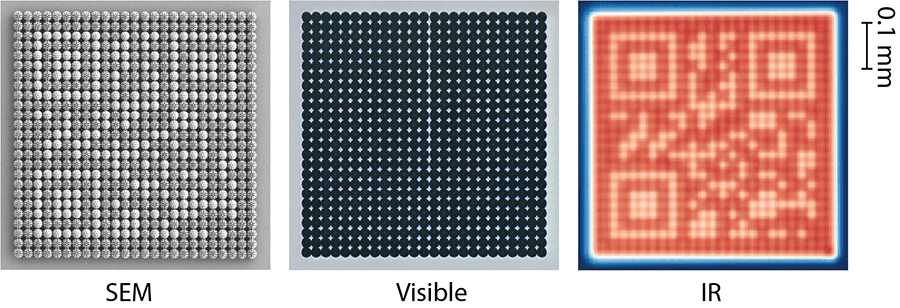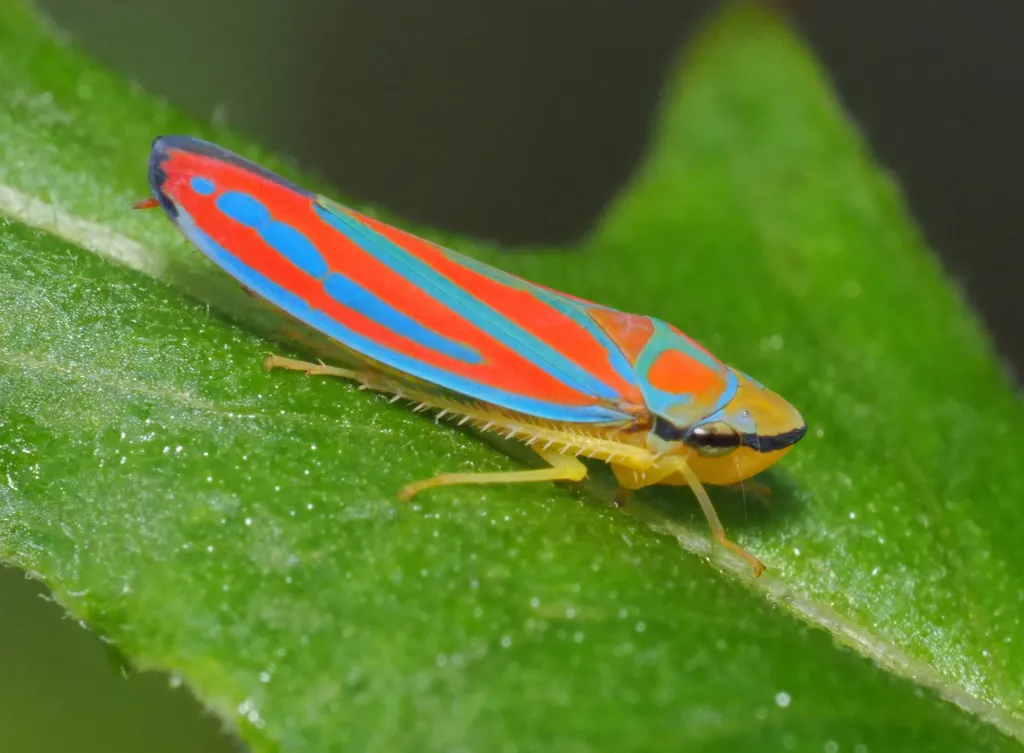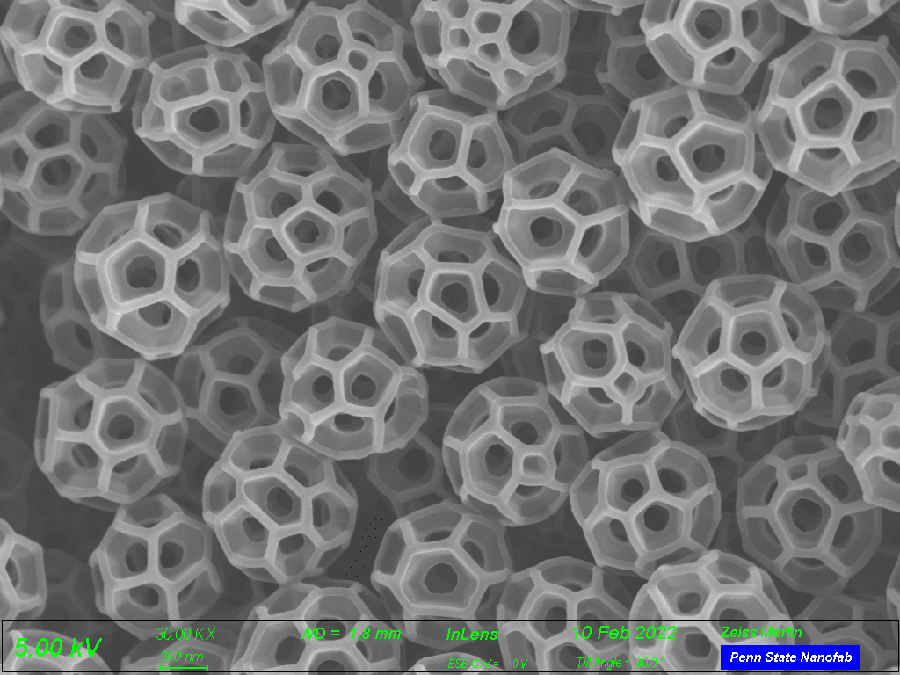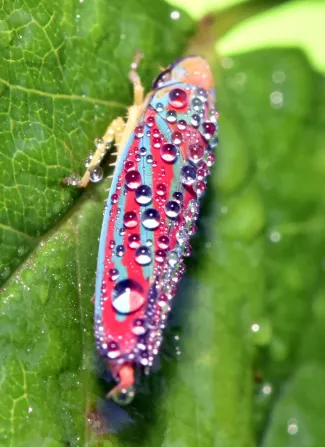
Researchers from Pennsylvania State University and Carnegie Mellon University have devised what can only be described as the world’s smallest QR code as a proof-of-concept for a novel type of technology. The goal is to enhance optical security, deter forgeries, and improve infrared surveillance.
The resulting QR code measures less than 2% of an inch and is invisible to the naked eye. To read it, you have to use an infrared camera.
What’s particularly interesting is that this technology mimics nanoscale structures on the surface of leafhoppers (Graphocephala coccinea). These fascinating structures interact with light in unusual ways that render the insects virtually invisible (particularly in the ultraviolet range) to predators.
“Our collaborators came to us with brochosomes—a ‘magic’ structure leafhoppers produce to create a cloak effect to hide from predators,” said lead author Sheng Shen, a professor of mechanical engineering at Carnegie Mellon University.
“We wanted to understand brochosomes’ optical limitations to see what more we could do with them.”
World’s smallest soccer balls to world’s smallest QR code

Tiny leafhoppers, often smaller than a grain of rice, have perfected the art of waterproofing. It’s all thanks to their brochosomes. Other insects largely rely on chemical properties or microscopic surface textures for water repellence. Leafhoppers, however, produce unique nanoparticles to coat their bodies, rendering them hydrophobic.
The structure of the brochosomes is complex, resembling hollow soccer balls made of proteins and lipids. The size of these nanoparticles ranges from about 200 to 1,000 nanometers wide. For scale, an average human hair is roughly 200 times wider than a brochosome.

Brochosomes are generated inside the leafhopper’s body in structures known as Malpighian tubules, which serve a similar function to human kidneys. The insects release these brochosomes through liquid droplets and then spread them over their bodies using comb-like structures on their hind legs.

These amazing properties have caught the attention of many researchers, who look at these nanostructures to guide the design and development of novel materials with hydrophobic and antireflective properties. But it wasn’t the hydrophobic properties that inspired the new research.
Brochosome physics in action
Brochosomes absorb light rather than reflecting it onto outside structures. This allows the leafhoppers to blend perfectly into their environment.
“There is a fundamental law in physics that if a structure is a good absorber of energy, it can emit an equal amount of energy,” said Zhuo Li, a Ph.D. candidate at Carnegie Mellon.
“We quickly realized that if we put both structures together, one would emit more energy than the other. That would make one appear brighter to an infrared camera than the other.”
The researchers used a special 3D printing technique that can manipulate how a material absorbs or emits energy on a pixel-by-pixel basis. In this context, they printed a nanoscale structure with or without holes, which is how they built this tiny QR code — so small it can only be seen through the lens of a microscope.
From camouflage to data encryption
The actual applications wouldn’t involve something tiny though. The idea is to increase its scale such that the combination of visible camouflage and infrared display could lead to some interesting opportunities.
“With this technology, we are ultimately distorting an object’s thermal signature,” said Li. “We have the power to disguise how objects are displayed on an infrared camera. Hypothetically, if we laid the brochosome pixels accordingly, we could paint a patrol car to appear as a delivery van to infrared security.”
“This is just the start of a new research area my team can explore,” said Sheng. “We’ve taken infrared light and turned it from an energy carrier to an information carrier.”
Previously, in 2017, the Penn State researchers explored how the leafhopper’s nanoparticles could enable them to make an invisibility cloak. One of their experimental devices that mimicked these properties was able to capture up to 99% of incoming light, from ultraviolet through to visible and close to infrared. With the ability to create invisible QR codes, objects can carry encrypted data visible only to specific infrared cameras. This could offer a new layer of security.
The findings appeared in the journal Science Advances.


